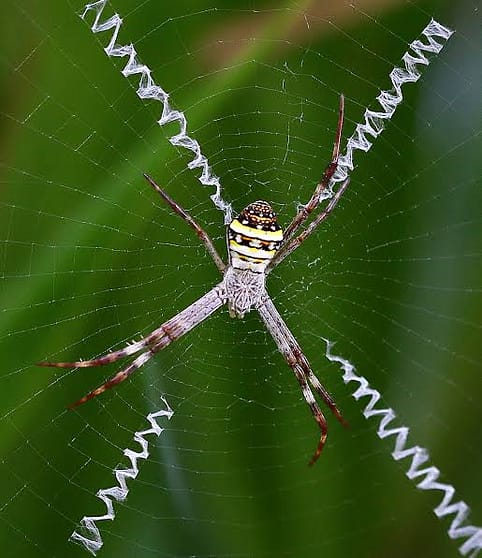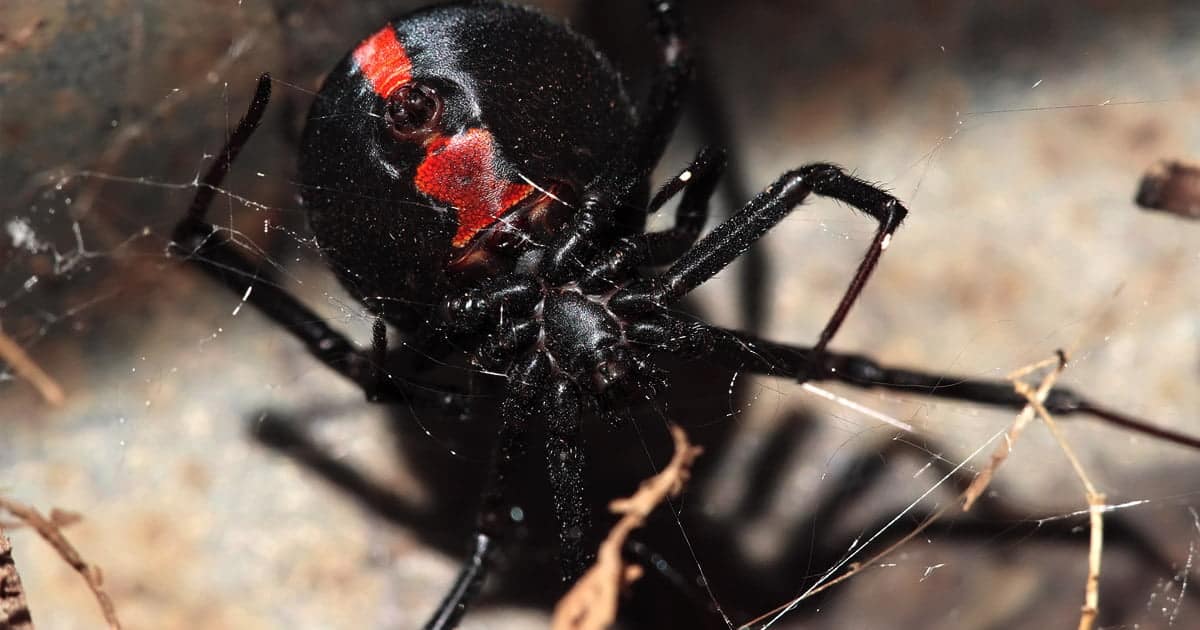So let’s set the record straight. Only 6 people a year die of spider bites. Compare that to 1,137 from car crashes and 15,000 from smoking – you really have NOTHING to worry about.
My name is Simon, I am the General Manager of Go Study Australia, and I am a native Australian. I grew up in the countryside near Melbourne and have had hundreds of encounters with spiders. To be honest, I am scared of some of them too – and some are dangerous – but they have never been a problem for me or my friends. In fact, I don’t know anyone who has been bitten by a spider and gained injury from it – at worst – a small irritation like a mosquito bite. We were always taught – they are more scared of us than we are of them.
Most Common: The Huntsman
Despite its scary name, this spider is completely harmless. I like to live inside houses and eats small insects. It’s the spider you will see most often around Australia. It can grow quite a bit hairy, so it looks very scary, but you can pick it up, and it will not bite (but we don’t suggest you pick any spider up).

It’s very likely you will see a Huntsman in Australia – they sometimes stay still on a wall for days at a time… It’s best just to leave them alone as they get rid of annoying insects and mosquitos…
But if you do want to remove it, here is the best way:
- Get a cup or jar and place it over the spider.
- Slide a piece of paper under the jar and spiders lets and tilt the jar.
- Walk the spider outside, and let him free in a garden.
A strange one – Daddy Long Legs

The daddy long legs is very common across Australia. It has a tiny body and really long legs, so it looks very strange. Surprisingly, this spider is venomous (has a poisonous bite) – but its mouth is fangs are so small and fragile is cannot bite a human… They are nothing to be worried about. They are so fragile and tiny and only eat very small bugs.
IN THE GARDEN – GOLDEN ORB AND ST JOHNS CROSS SPIDERS
Golden orb spiders have a big back end (called an abdomen) and an orange body. St John’s Cross spiders weave amazing cross-shaped webs and wait in trees to catch flies, bees and other bugs. When it rains or there is dew in the air – the water on the webs forms beautiful patterns. I have had plenty of times when I walk into their webs and get covered in spider webs, but again – these guys are harmless… they do not bite people and just go about their own business finding food in the garden.


The nasty ones
The most common spiders that you should be wary of are generally out in regional areas like farms. These include:
THE REDBACK

This small black spider with some red on its back can give a nasty bite… they will bite if they feel threatened, so you need to be careful when lifting rocks, wood etc. You don’t find these guys in big cities. They are easily avoided by wearing gloves when working.
THE WHITE TAIL

This one again likes to live in woodpiles, under houses and can give a nasty bite. Gloves again will protect you if you are working or gardening in regional areas.
FUNNEL SPIDER

And lastly – let’s talk about the funnel-web spider. This little guy lives in and around the Sydney region and parts of NSW. Although it builds a tunnel in the ground to catch his prey, he can sometimes be found inside. It is poisonous, and looks scary – like a small tarantula… But again, if left undisturbed – there will be no problems. On the rare occasion, you find your inside, you should be cautious and not get close.
Summary
Spiders have an important role to play in the ecosystem. They feed off insects (and the bigger ones of small animals) and keep nature balanced. We fear what we don’t understand, and the guys look scary and unpredictable. But the reality is they just want a quiet place to catch bugs and build a web… If you see one in the wild – leave it alone, and you will be fine. If you see one at home – don’t kill it – relocate it to a location away from you, so you can both be happy.
As a comforter: All hospitals in Australia have anti-venom in case you are bitten but a venomous spider – but this is really uncommon.
If you want to come to Australia and experience our amazing wildlife and natural wonders – contact Go Study for details on how we can help you. You can ask any of our staff about their experience with spiders or any concerns you may have.
See you DownUnder!
Simon Costain
General Manager





